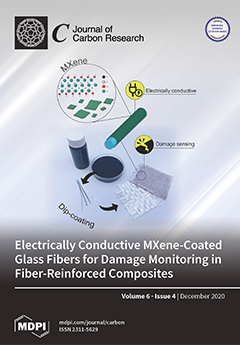Recently, we reported the use of CO
2 laser pyrolysis for the synthesis of promising Fe/C/N electrocatalysts for Oxygen Reduction Reaction (ORR) in fuel cells. The set-up used single laser pyrolysis of an aerosolized solution of iron acetylacetonate in toluene with ammonia, both
[...] Read more.
Recently, we reported the use of CO
2 laser pyrolysis for the synthesis of promising Fe/C/N electrocatalysts for Oxygen Reduction Reaction (ORR) in fuel cells. The set-up used single laser pyrolysis of an aerosolized solution of iron acetylacetonate in toluene with ammonia, both as laser energy transfer agent and nitrogen source. In the present paper, we investigate the effect of a second ammonia promoted CO
2 laser pyrolysis on the feature and ORR activity of Fe/C/N electrocatalysts. Indeed, compared to single pyrolysis, the second ammonia promoted CO
2 laser pyrolysis could be an interesting way to synthesize in one-step performing ORR electrocatalysts on a large scale. For this comparison, a two-stage reactor was built, allowing both single ammonia-induced CO
2 laser pyrolysis as reported previously or double ammonia-induced CO
2 laser pyrolysis. In the latter configuration, the catalyst nanopowder flow is formed at the first stage of the reactor, then mixed with a second ammonia flow and allowed to cross a second CO
2 laser beam, thus undergoing a second ammonia-induced CO
2 laser pyrolysis before being collected on filters. It is found that the second ammonia-induced CO
2 laser pyrolysis significantly improves the ORR performances of the materials prepared by single CO
2 laser pyrolysis. The effect is demonstrated for three different catalysts for which the onset potentials for the ORR from single-stage to double-stage configuration increase from 625 mV to 845 mV, 790 mV to 860 mV, and 800 mV to 885 mV, respectively. The selectivity of the ORR was determined at 600 mV/SHE and lie between 3.41 and 3.72. These promising performances suggesting potentialities for the one-step formation of highly active Fe/C/N ORR electrocatalysts are discussed, based on results of surface analysis by XPS, specific surface area measurements, and Raman spectroscopy.
Full article





